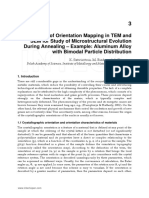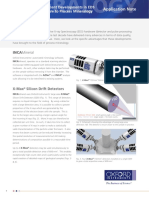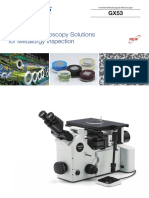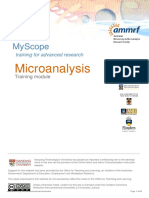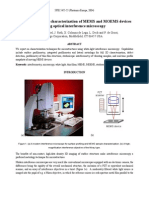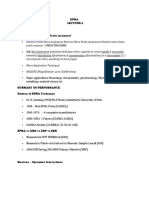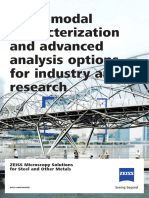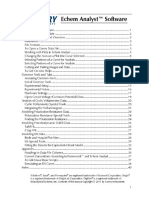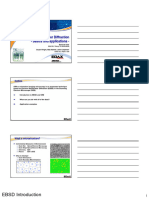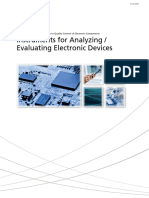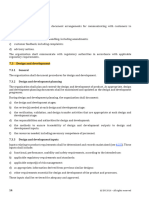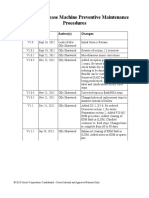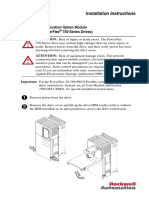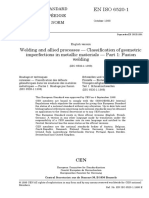100% found this document useful (1 vote)
333 views8 pagesAn Introduction To Oim Analysis™
This document provides an overview of the features and capabilities of OIM Analysis software for analyzing electron backscatter diffraction data. It describes the various mapping, charting, plotting, and analysis tools available for visualizing microstructural features such as grain structure, phases, orientations, and properties.
Uploaded by
Supriya AnandCopyright
© © All Rights Reserved
We take content rights seriously. If you suspect this is your content, claim it here.
Available Formats
Download as PDF, TXT or read online on Scribd
100% found this document useful (1 vote)
333 views8 pagesAn Introduction To Oim Analysis™
This document provides an overview of the features and capabilities of OIM Analysis software for analyzing electron backscatter diffraction data. It describes the various mapping, charting, plotting, and analysis tools available for visualizing microstructural features such as grain structure, phases, orientations, and properties.
Uploaded by
Supriya AnandCopyright
© © All Rights Reserved
We take content rights seriously. If you suspect this is your content, claim it here.
Available Formats
Download as PDF, TXT or read online on Scribd
/ 8




